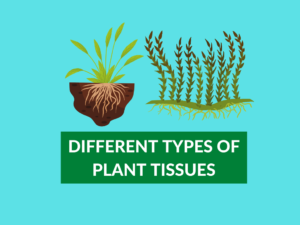The Difference Between Absorption and Assimilation
Understanding the processes of absorption and assimilation is vital for comprehending how organisms acquire and utilize nutrients. In this article, we will delve into the definitions and examples of absorption and assimilation, explore their uses, and outline the key differences between these two fundamental biological processes.
What is Absorption?
Absorption refers to the process by which nutrients, such as water, minerals, and other substances, are taken up and incorporated into an organism’s cells or tissues. It occurs primarily in the digestive system, where the extracted nutrients are absorbed into the bloodstream for distribution throughout the body.
Examples of Absorption
Let’s take a look at a few examples to further illustrate the concept of absorption:
- When you consume food, your body absorbs the nutrients present in it, such as carbohydrates, proteins, and fats, for energy and growth.
- In plants, roots absorb water and minerals from the soil through specialized structures called root hairs.
- Intestinal villi, which are tiny finger-like projections lining the small intestine, aid in the absorption of nutrients into the bloodstream.
Uses of Absorption
Absorption serves several crucial functions in organisms:
- Provides nutrients for growth and maintenance of cells and tissues.
- Facilitates the transportation of essential substances throughout the body.
- Allows for the uptake of water and minerals necessary for various physiological processes.
What is Assimilation?
Assimilation refers to the process by which absorbed nutrients are integrated and converted into the internal structures of an organism’s cells. It involves transforming the absorbed substances into forms that can be utilized by the body.
Examples of Assimilation
Here are a few examples to make the concept of assimilation clearer:
- In animals, after nutrients are absorbed into the bloodstream, they are assimilated by various organs and tissues to support metabolic activities.
- In plants, carbon dioxide obtained during photosynthesis is assimilated into glucose, a form of sugar that can be stored or used for energy.
- When you consume proteins, your body breaks them down into amino acids, which are then assimilated into muscle tissues for growth and repair.
Uses of Assimilation
Assimilation serves several important purposes in organisms:
- Enables the synthesis of complex molecules required for cellular functions and growth.
- Provides the building blocks necessary for building and repairing tissues.
- Converts absorbed nutrients into forms that can be used to generate energy.
Differences Between Absorption and Assimilation
Below is a table highlighting the main differences between absorption and assimilation:
| Difference Area | Absorption | Assimilation |
|---|---|---|
| Process Definition | The uptake and incorporation of nutrients into an organism’s cells or tissues. | The integration and conversion of absorbed nutrients into the internal structures of an organism’s cells. |
| Location | Primarily occurs in the digestive system. | Takes place in various organs and tissues after absorption. |
| Outcome | Nutrients are extracted from the ingested food and absorbed into the bloodstream. | Absorbed nutrients are transformed into forms that can be utilized by the body. |
| Function | Provides nutrients for growth, maintenance, and transportation throughout the body. | Synthesizes complex molecules, builds and repairs tissues, and produces energy. |
| Organisms Involved | Applies to both animals and plants. | Applies to both animals and plants. |
| Primary Site | Occurs mainly in the gastrointestinal tract. | Takes place in various organs, including liver, muscles, and cells. |
| Timing | Follows the ingestion of food. | Follows the absorption of nutrients into the bloodstream. |
| Conversion | Extracts and transports nutrients in their original form. | Transforms absorbed nutrients into usable forms. |
| Examples | Consuming food, water absorption in plants, absorption in villi. | Assimilation by organs and tissues, assimilation of carbon dioxide in photosynthesis, amino acid assimilation. |
| Goal | To extract and incorporate vital substances into the body. | To convert absorbed nutrients into functional components of the organism. |
Conclusion
While absorption and assimilation are interconnected processes involved in nutrient acquisition and utilization, they differ in terms of their definitions, locations, functions, and outcomes. Absorption primarily takes place in the digestive system and involves the uptake of nutrients, while assimilation occurs in various organs and tissues to integrate and convert the absorbed substances into usable forms.
People Also Ask
- What is the relationship between absorption and assimilation?
Absorption is the process of taking up and incorporating nutrients into an organism, while assimilation is the conversion and integration of those absorbed nutrients into the internal structures of the organism’s cells. - What are the primary sites of absorption and assimilation in animals?
In animals, absorption primarily occurs in the gastrointestinal tract, particularly in the small intestine. Assimilation, on the other hand, occurs in various organs and tissues, including the liver, muscles, and cells. - Are absorption and assimilation relevant only to animals?
No, both absorption and assimilation are fundamental processes in both animals and plants. They play essential roles in nutrient acquisition and utilization across different organisms. - How do absorption and assimilation contribute to growth and development?
Absorption provides essential nutrients for the growth and maintenance of cells and tissues. Assimilation further supports growth by synthesizing complex molecules, building and repairing tissues, and providing the energy necessary for development. - Can the terms absorption and assimilation be used interchangeably?
While absorption and assimilation are closely related processes, they refer to distinct stages and functions within the overall nutrient utilization process. Absorption involves the uptake of nutrients, while assimilation focuses on their integration and conversion into usable forms within an organism’s cells.


